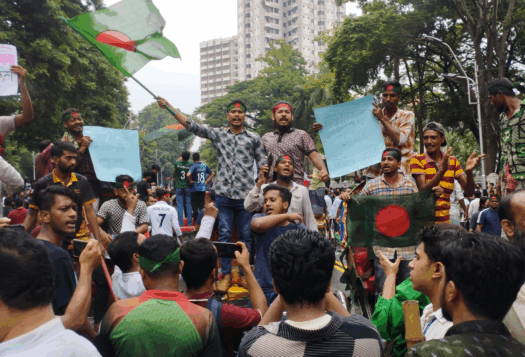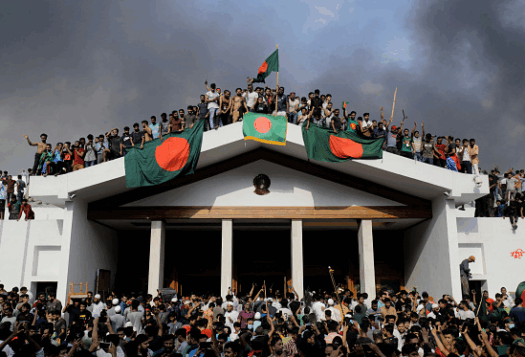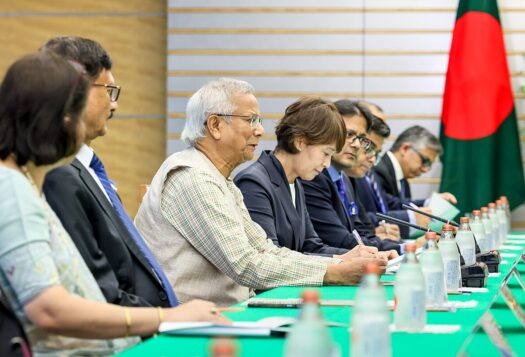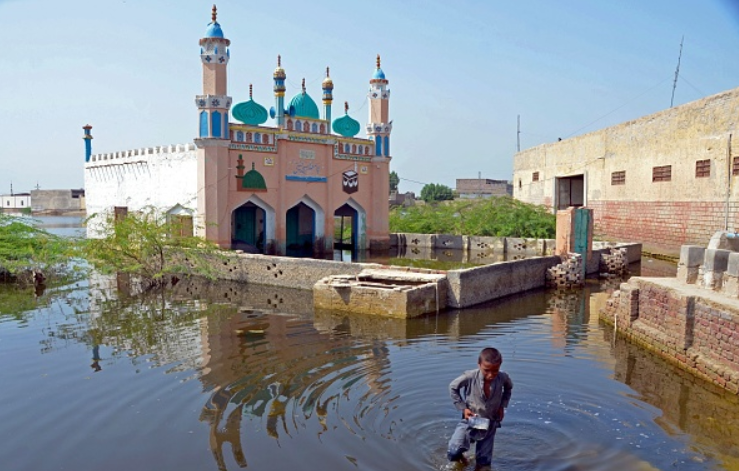
Pakistan has been experiencing one of the worst floods in its history, with over 33 million citizens affected. Some 1,500 have lost their lives and many more are in danger due to the spread of dengue fever and other infectious diseases. The economic cost of the floods has been estimated to be over 18.5 billion USD, at a time when the country is already at the brink of economic collapse. The situation demanded an immediate and urgent response from Pakistani media, which could have played a vital role in issuing early warnings, educating the public, and drawing the attention of policymakers to the situation on the ground. Unfortunately, however, it is only recently that the media has begun to focus on the floods as a top story in the country. A look back at media coverage from when the disaster began earlier this summer shows not only unfair treatment in terms of which regions were covered, but also overall negligence.
Media coverage was unfair in the sense that it gave limited coverage to the floods’ damage in the province of Balochistan, despite it being the worst affected region. In terms of negligence, the media waited until the onset of the calamity to start covering the situation on the ground. Even when Sindh and Balochistan were submerged in water, the media was busy covering political rivalries and rallies in Punjab and Islamabad.
The coverage of the situation in Sindh was also focused more on the politicking between the Pakistan Tahreek-e-Insaaf (PTI) and the Sindh government, and much less on the environmental and humanitarian crisis on the ground.
Biased and Delayed Coverage
Balochistan, the largest but most underdeveloped province of Pakistan, has been hit the hardest by the floods. According to some estimates, of the 1,500 lives lost in the floods, some 304 (20 percent) were in Balochistan. Likewise, over 60 percent of the damage to infrastructure in Pakistan has been in this province. While people were sharing pictures and videos of their flooded neighborhoods through social media and pleading to the government to provide relief, mainstream media coverage of the disaster was almost non-existent. This is, however, not the first time Balochistan has been neglected.
Most media networks, particularly digital media houses, do not have bureau offices in Balochistan due to several factors such as low commercial benefits, infrastructural challenges of maintaining a smooth flow of communication, and the poor security situation in the region. Being the least populous province, Balochistan does not provide the audience that larger provinces like Punjab and Sindh can provide. During the floods, as the province faced a communication breakdown, local reporters who largely rely on WhatsApp to communicate could not share the state of the situation on the ground with bureau offices in the cities of Punjab and Sindh. Even in Sindh, where communication was intact, media coverage remained focused on the flood situation in Karachi missing calamity in interior Sindh, again due to the high commercial interests of media outlets in urban centers.
These biases in coverage are linked to media regulation and censorship as well. The military establishment that controls the civil rights movements and insurgent groups in the province with both lawful and unlawful means, prefers blacking out any news that comes from Balochistan. The sparsely populated province with only 16 seats in the National Assembly is also not the main attention of mainstream political parties. With several cases of journalists missing or murdered, it is no surprise that there is neither enough human resources left to report from Balochistan, nor the audacity to give such reports prime coverage.
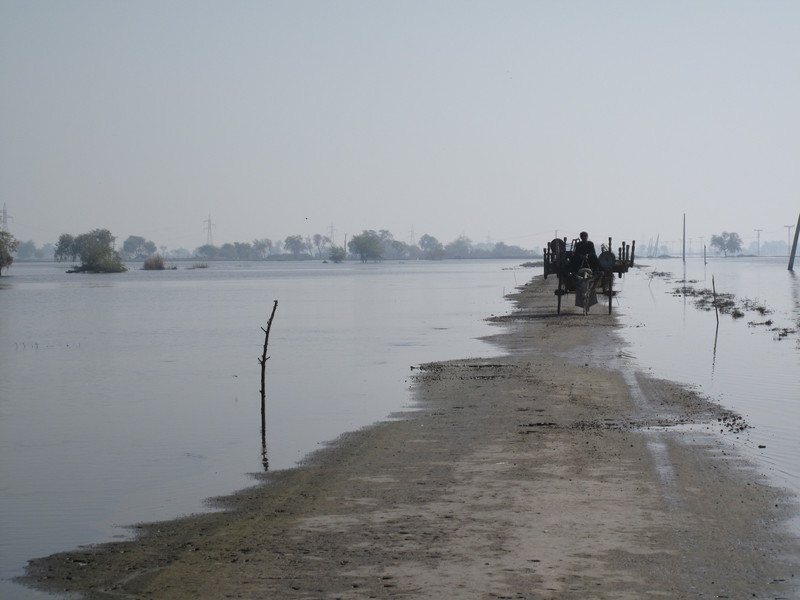
Given that meteorologists have warned against natural disasters since early in the year, the media coverage of the floods was also extremely delayed. Except for basic coverage of the weather forecast, the media did not initiate any campaigns to warn people of a possible flood situation. Even when floods were reported in Balochistan and Sindh in mid-July, media attention was diverted to the political situations in Punjab and Islamabad. For instance, on July 17, the front page of Daily Dawn had a headline on Punjab’s provincial assembly election but no coverage of the floods, despite ten districts in Balochistan already declared “calamity-hit.” The story was covered in the third page of the paper. Consequently, the surge in rescue and relief efforts also began in late July when the floods had already wreaked havoc in Balochistan. A more responsive attitude from the media could have helped save many lives.
Politicizing a Natural Disaster
The humanitarian crisis caused by the floods required a unified national response from all institutions and all levels of government. However, the flood situation only exacerbated the ongoing political crisis in the country. Media—where ratings dictate which stories are to be covered—the blame game, and political point-scoring were prioritized over real humanitarian problems. The media also has its own partisanships that have become increasingly prominent with heightened political polarization. Consequently, it has lost its reputation as a source of information in Pakistan.
Through July, the media largely focused its attention on Former Prime Minister Imran Khan’s rallies against his political rivals after being ousted through a vote of no-confidence. Furthermore, with political parties using the floods as a way to blame opponents, the prime time talk shows on most channels focused more on such accusations than critical discussions on the poor disaster management system in Pakistan. While Khan was criticizing the performance of the Sindh government and federal government, he overlooked and ignored the dire situation in the Khyber Pakhtunkhwa (KP) province, where a rescue mission could not reach four brothers stuck among flooding water in Swat for three long hours. As the natural disaster management and climate change sectors are highly underinvested sectors in Pakistan, the previous governments are as much to blame as the new one, and the media holds the responsibility for cross-questioning the political leadership about their investment in these sectors as they point finger towards each other.
The media was equally busy covering the visits of political leaders who just took photos with flood victims and used them in their public relations and social media content. Such high-level visits in flood-affected areas are known for hindering rather than benefitting rescue and relief efforts. As the media covers these visits but fails to provide similar coverage to those impacted worst by the floods, nor to relief efforts, its role in the natural disaster management response has been anything but responsible.
The role of the media in managing public emergencies is well-recognized. Before a natural disaster, the media is meant to issue early warnings and prepare the public for a possible emergency. During the calamity, it should share details of the affected areas, highlight the severity of the situation to alert relevant authorities, and guide them on immediate needs.
Even after the disaster, the role of the media does not end, for it must critically analyze rescue and relief efforts, pointing out policy limitations and offering recommendations on improving the country’s disaster preparedness and management system.
Pakistani media, with its biased and delayed coverage of the floods, could not play its role before and during the disaster, but it still has a chance to play the part in its post-disaster analysis. Now that most media outlets are giving good coverage to the flood situation, it is important that they focus on how government mismanagement led to serious delays in the disaster response. It must engage both the current government and the opposition in a policy-oriented debate, and push for a cohesive and long-term legislative response rather that petty politicking and blame games.
***
Click here to read this article in Urdu.
Image 1: FIDA HUSSAIN/AFP via Getty Images
Image 2: Flickr via Oxfam International
